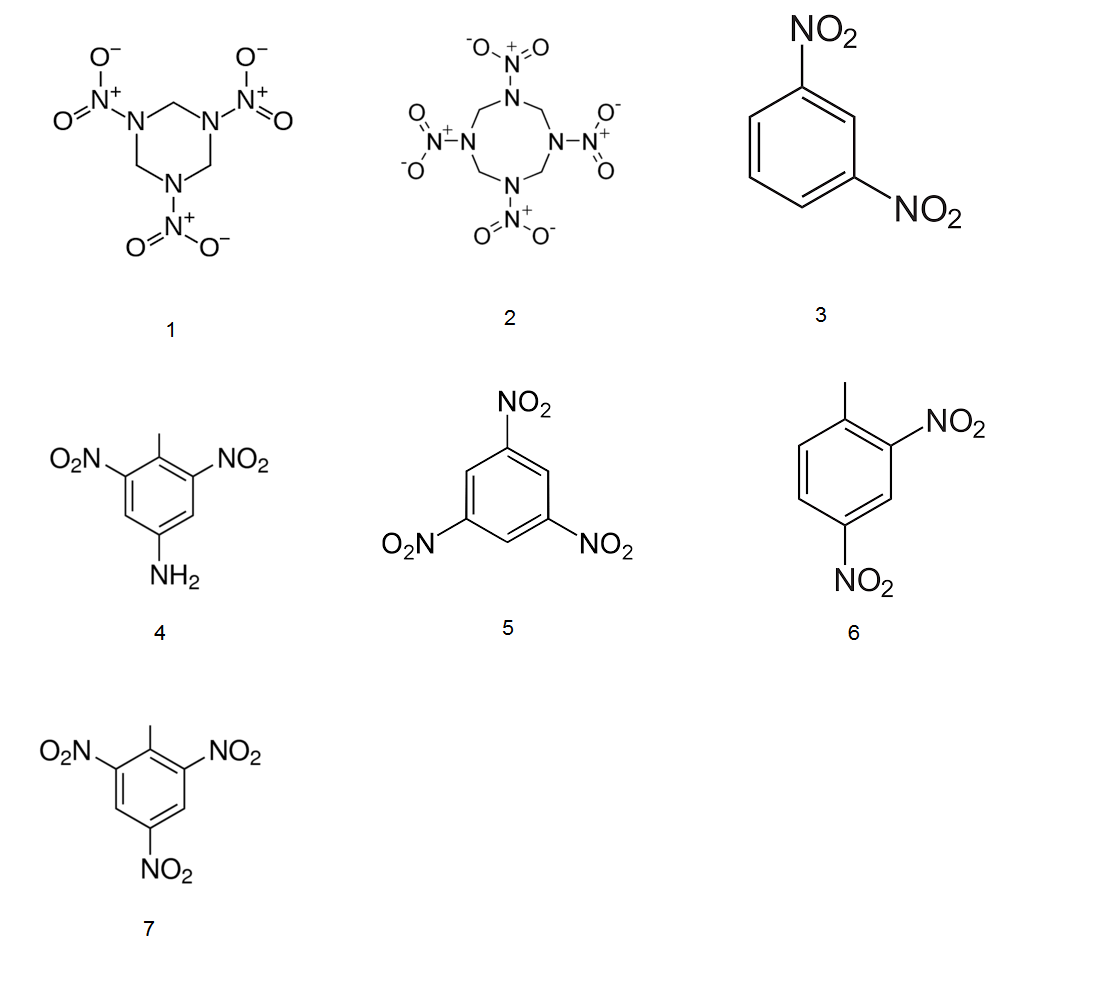A Reproducible Method for Detection of a Nitroaromatics
Click HERE for Column Ordering Information.
The EPA Standard Test Method (8330B) for the analysis of Seven Nitroaromatic and Nitroamine Explosives in Soil with HPLC requires the use of two Reversed-Phase Columns, C18 and CN in series. These Explosive compounds are notorious for separation difficulty due to the similarities in structure.
This Method has been developed for all seven of the Nitroaromatic Explosives and is rapid, sensitive, and Reproducible .
Peaks:
1. Hexahydro-1,3,5-trinitro-1,3,5-triazine (HTNT)
2. Octahydro-1,3,5,7-tetranitro-1,3,5,7-tetrazocine (OTNT)
3. m-Dinitrobenzene (DMB)
4. 2-Amino-4,6-dinitrotoluene (ADNT)
5. 1,3,5-Trinitrobenzene (TNB)
6. 2,4-Dinitrotoluene (DNT)
7. 2,4,6-Trinitrotoluene (TNT)
Method Conditions
Column: Cogent Phenyl Hydride™, 4μm, 100Å
Catalog No.: 69020-15P
Dimensions: 4.6mm x 150mm
Mobile Phase:
—A: DI Water with 0.1% Formic Acid (v/v)
—B: Acetonitrile with 0.1% Formic Acid (v/v)
Gradient:
| Time (minutes) | %B |
| 0 | 25 |
| 10 | 65 |
| 11 | 25 |
| 15 | 25 |
Injection vol.: 1μL
Flow rate: 1.0mL / minute
Detection: UV @ 254nm
Sample Preparation: EPA Method 8330 Explosives Mixture each analyte @ 100 ug/mL Standard Solution in Acetonitrile
%RSD: <0.2%
Notes: These solid compounds do not occur naturally in the environment. The commonly known compound, TNT, is an explosive used in military shells, bombs, and grenades, in industrial uses, and in underwater blasting. 2,4,6-Trinitrotoluene production in the United States occurs solely at military arsenals.




